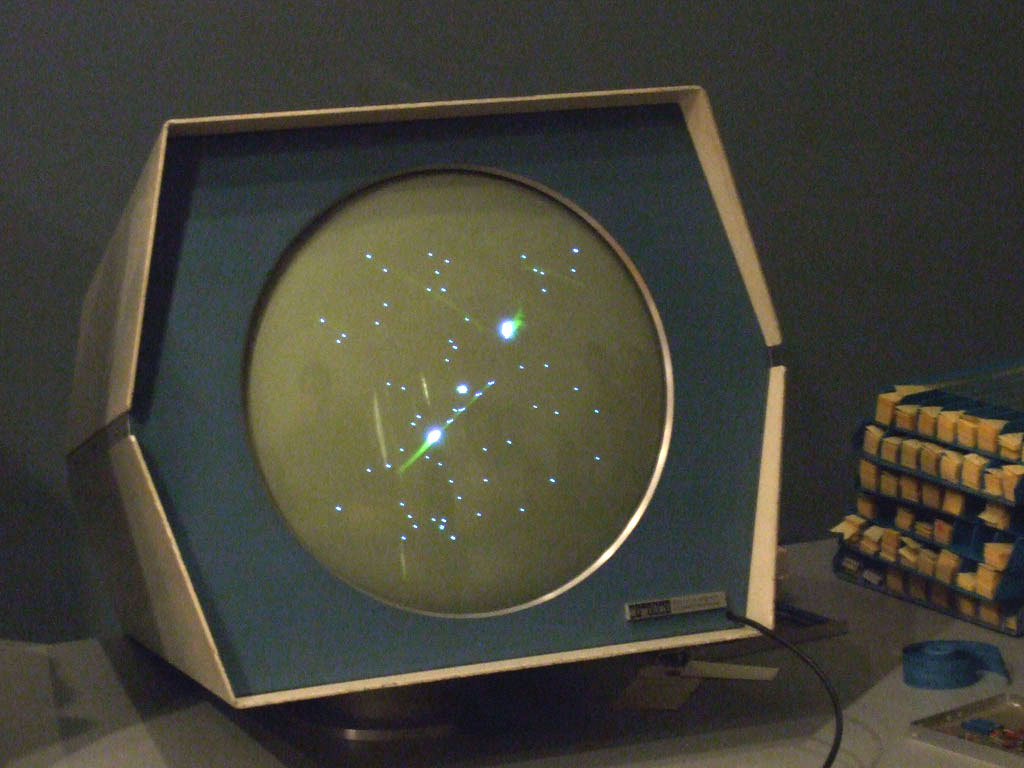
Usually when asked to name the first arcade machine, most will name the first true arcade hit, Pong. However, arcade machines have a longer history than that.
Early electronic games of the 50s and 60s are comparable to arcade games in the sense that they often ran on large dedicated machines. An electronic version of the Chinese game Nim was created in 1951 running exclusively on the NIMROD computer, a one-ton machine created exclusively to run the game. The machine was shown at the Festival of Britain, a domestic technology fair similar to the World’s Fair. In 1958, for Visitor’s Day at the Brookhaven National Laboratory, a computer using an oscilloscope displayed a promotion game called Tennis For Two. The game was meant to show off the laboratory’s advanced hardware. Neither the NIMROD nor the Tennis For Two computer were ever conceived as commercial games.
In 1962, a group of MIT students created the computer game Spacewar! This game is often considered the ancestor of popular shooter games like Space Invaders and Galaga. Spacewar! used vector graphics and was often used to test the DEC PDP-1 hardware it was designed for as it used every bit of the hardware. The game was never released commercially but circulated among university computer engineering programs. 9 years later, in 1971, a group of Stanford students adapted Spacewar! as Galaxy Game, the first true coin-operated arcade game. Only one machine was ever made of Galaxy Game and it was located in the Standford Student Union, though the machine was later adapted to play other games.
While Galaxy Game probably should get the nod as the first arcade game, the first game that was a commercial enterprise and was mass-produced for sale came two months later. Nolan Bushnell, the founder of the Atari, also cloned Spacewar! and put it into an arcade machine, naming it Computer Space. Bushnell’s fiberglass cabinets had a very retro-futuristic feel with rounded edges and bright colors. Computer Space was not commercially successful, but did well enough to keep Bushnell afloat until his next hit, Pong, came out in 1972 and set the stage for Atari’s massive commercial success until the video game market crashed in 1982.



